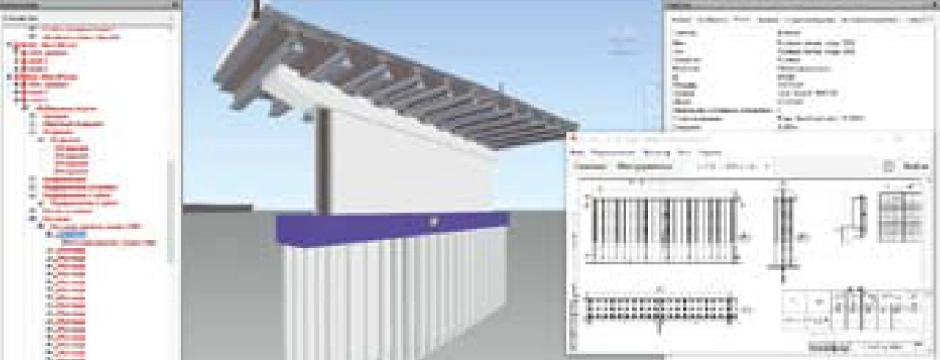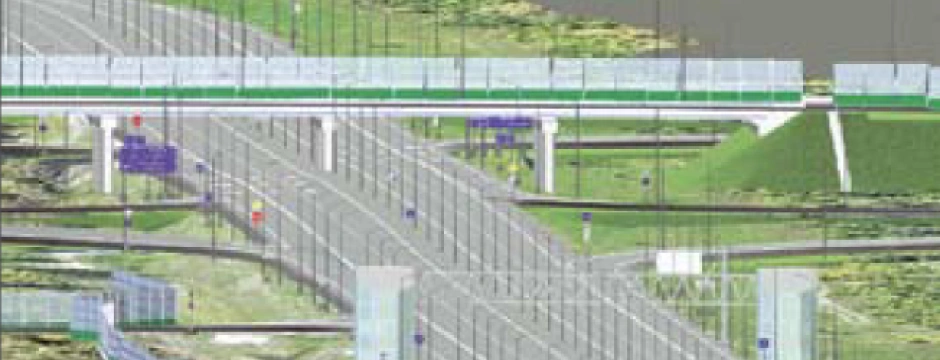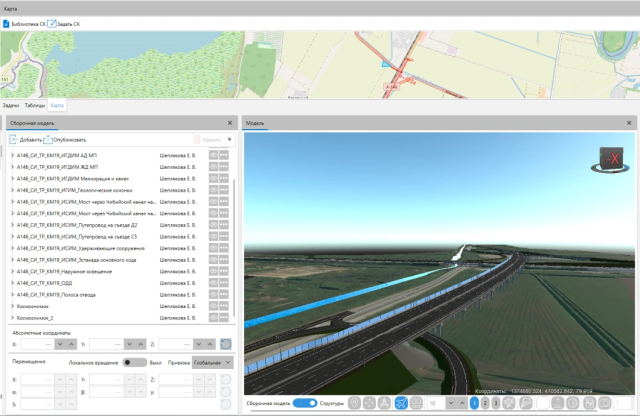Another step forward on the path to BIM

 Vladimir Frolov Head of Transport Infrastructure Department, Stroyproekt-INFO LLC
Vladimir Frolov Head of Transport Infrastructure Department, Stroyproekt-INFO LLC
One of the cornerstones of the industrial application of BIM technology is the appropriate regulatory framework governing information modeling issues in the road industry.
The effectiveness of using BIM technology at different stages of the life cycle of capital construction projects has been assessed in many foreign countries, where, when developing project documentation, it is mandatory to move from the traditional (two-dimensional) presentation of drawings to the presentation of an information model of the designed object, therefore the transition to the industrial application of BIM technology in Russia it is only a matter of time.
One of the cornerstones of introducing BIM technology into everyday life is the appropriate regulatory framework governing information modeling in the road industry, which is currently missing.

on the highway “Western Bypass of Sergiev Posad”
The Federal Road Agency "Rosavtodor" is systematically working to study and implement into the practical use of new modern technologies in the field of road infrastructure, both in terms of the design of transport infrastructure facilities, and their construction and subsequent operation.
The introduction of new technologies on an industrial scale must be accompanied by appropriate organizational, regulatory, technical and technological processes.
As part of the developed action plan for the phased implementation of information modeling technology (BIM technology) in the field of road infrastructure, the Federal Road Agency carried out research work to develop temporary regulations for the interaction of participants and additional sections of the terms of reference for the implementation of work on the development of design and working documentation for " pilot" projects in relation to the construction, reconstruction and major repairs of transport infrastructure facilities using BIM technology, taking into account the provisions of the standards of European countries.
This research work is intended to formulate temporary recommendations for the use of information modeling, the implementation of which will allow testing elements of information modeling technology on “pilot” projects, which will subsequently allow us to obtain substantiated materials that will form the basis of a unified BIM standard regulating information modeling issues in relation to transport infrastructure facilities.
The result of the work was temporary regulations for the interaction of information modeling participants developed for the implementation of “pilot” projects, as well as a set of documents that can be used as additional sections of the technical specifications for the development of design and working documentation, which included:
- Customer requirements for the formation of an information model, which determine the list of mandatory conditions for the formation of an information model, including requirements for the coordinate system, data formats, levels of elaboration of elements, general requirements for the design of the information model (naming layers, types of lines, blocks, elements , requirements for graphic display of model elements);
- Customer requirements for organizing a shared data environment, defining the procedure for using the shared data environment, standard user roles and rights, rules for introducing the main elements of the project into the information model;
- A typical template for an information modeling project implementation plan, which describes step by step all information modeling processes;
- A basic classifier of elements of information models of highways, which contains a formal definition of the main elements of highways based on modern industry terminology;
- Levels of geometric and attribute elaboration of information model elements, establishing the types of degrees of detail (accuracy, detail of description) of information models, as well as types of information filling (attributes, parameters, properties).
In addition, the work provides proposals for the rules for evaluating applications, final proposals of participants in the procurement of design work performed using information modeling technologies, as well as justification of their cost for use in competitive procedures when determining the contractor for the development of design and working documentation for “pilot” projects.

content and an attached sheet of drawing of the support grillage (“Bypass of Barnaul”)
One of the developers of this work was Stroyproekt-INFO LLC, an organization that is part of the Stroyproekt Engineering Group Association and specializes in information modeling of transport infrastructure facilities. The multidisciplinary team of Stroyproekt-INFO LLC includes specialists from various fields: bridge builders, road workers, IT and BIM specialists, which allows for close interdisciplinary coordination in the implementation of complex BIM projects.

The development was based on the experience gained by the authors during the organization of the information modeling process during the implementation of the projects “Bypassing the city of Barnaul with a bridge across the river. Ob" and "Western bypass of Sergiev Posad"
The authors of the work participated with a report on the progress of the work in the round table of the Federal Road Agency, held as part of the BIM Congress organized by Autodesk in June 2017. The work received a wide response among specialists - more than 30 organizations took part in the review, acting as customers of design estimates for the construction, reconstruction and major repairs of federal highways, design organizations, organizations providing consulting services in the field of information modeling, and also organizations that develop software used in the development of design and estimate documentation.
The recommendations made by specialists from reviewing organizations were included in the final version of the work.
“Pilot” projects should become a platform for experimental testing of elements of information modeling technology in the design of transport infrastructure facilities, testing the tasks of using an information model as a way of interaction between the customer and the contractor, and interdisciplinary interaction of specialists in the development of project documentation.
The start of “pilot” projects implemented using BIM technology will make it possible to evaluate in practice the advantages of information modeling technology in the preparation of project documentation, primarily for customers.
Based on the results of the implementation of “pilot” projects, the main directions for the further development of regulations governing information modeling in the road industry should be determined; in particular, it is necessary to determine a list of changes to individual legislative acts of the Russian Federation, as well as prepare a list of regulations ( GOST, SP, ODM), the development of which will ensure the effective implementation of information modeling technology in relation to transport infrastructure facilities.
 Vladimir Frolov Head of Transport Infrastructure Department, Stroyproekt-INFO LLC
Vladimir Frolov Head of Transport Infrastructure Department, Stroyproekt-INFO LLC



